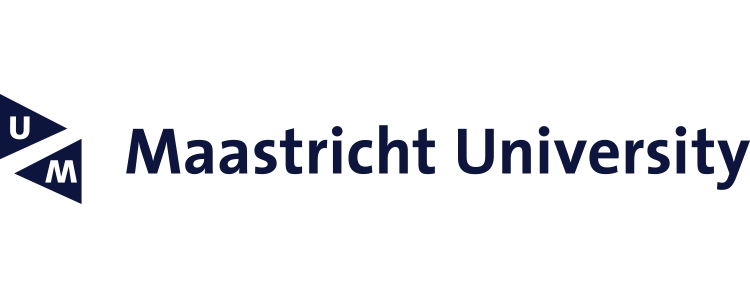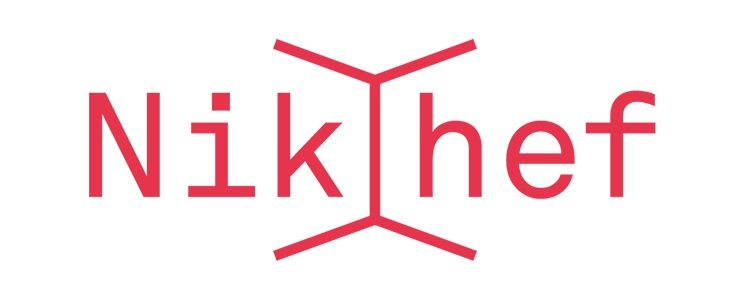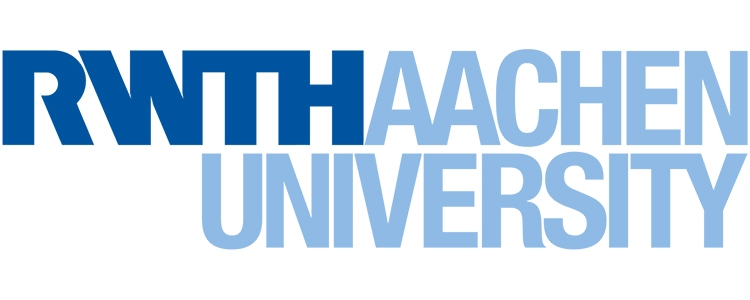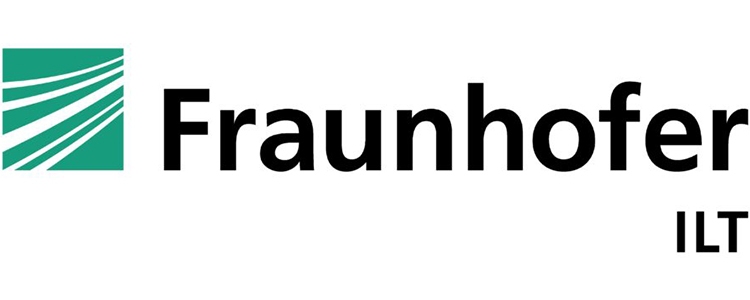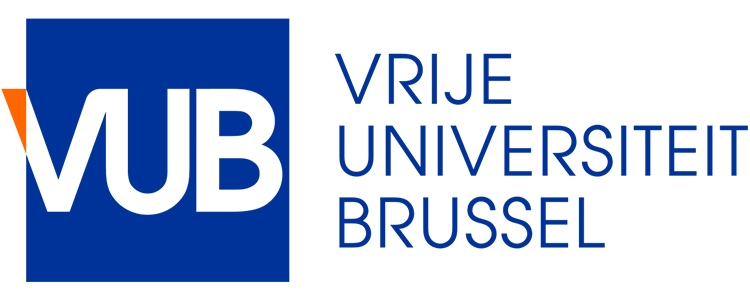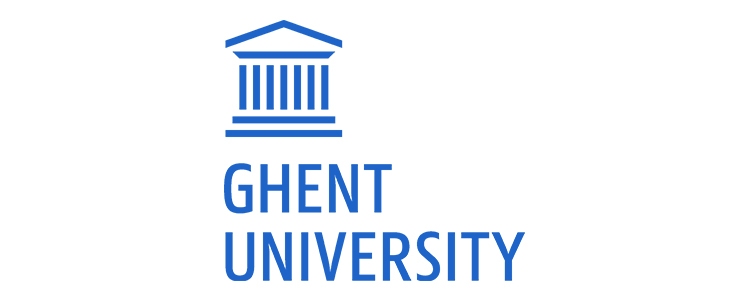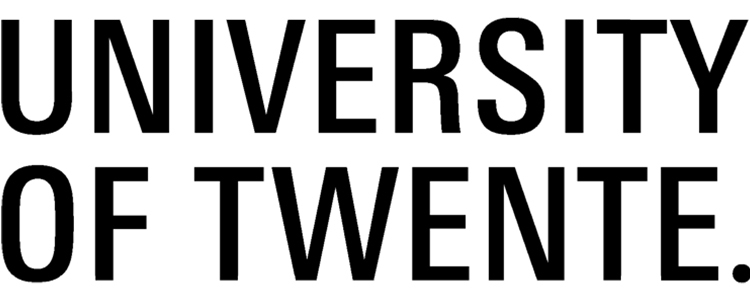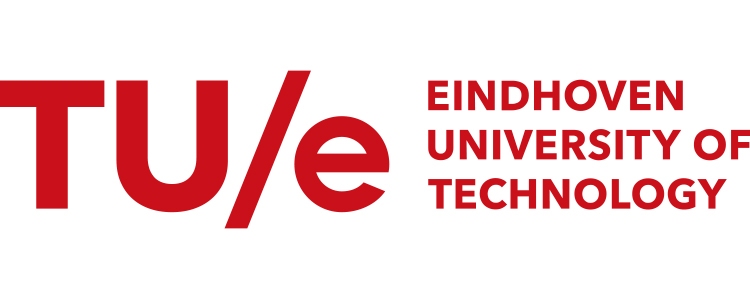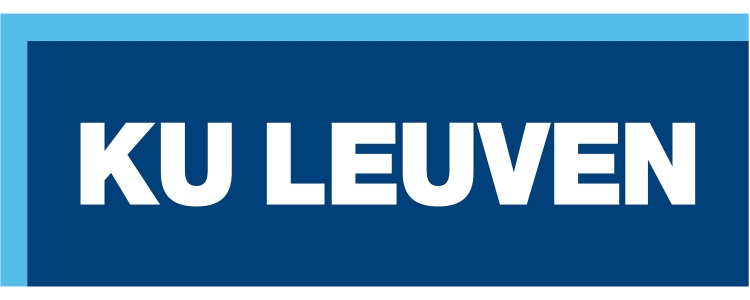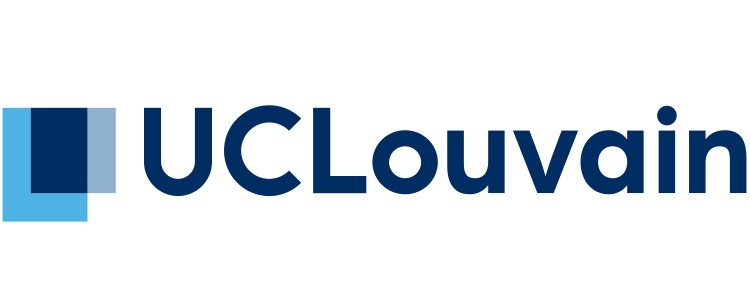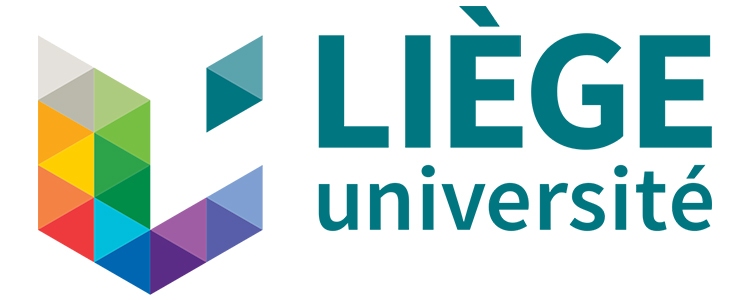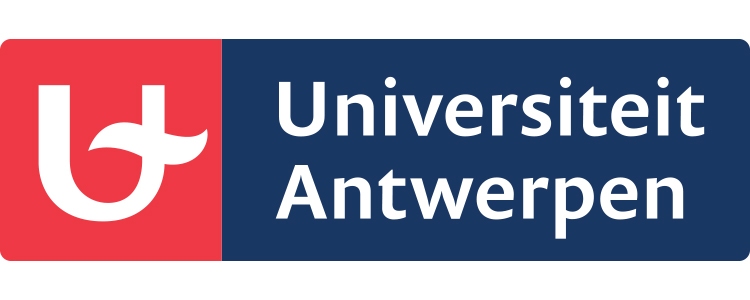Founding partners
Nikhef
Nikhef is the Dutch National Institute for Subatomic Physics, coordinating and leading the Dutch experimental activities in the fields of accelerator-based particle physics and astroparticle physics, with the mission of studying the interactions and structure of all elementary particles and fields at the smallest distance scale and the highest attainable energy.
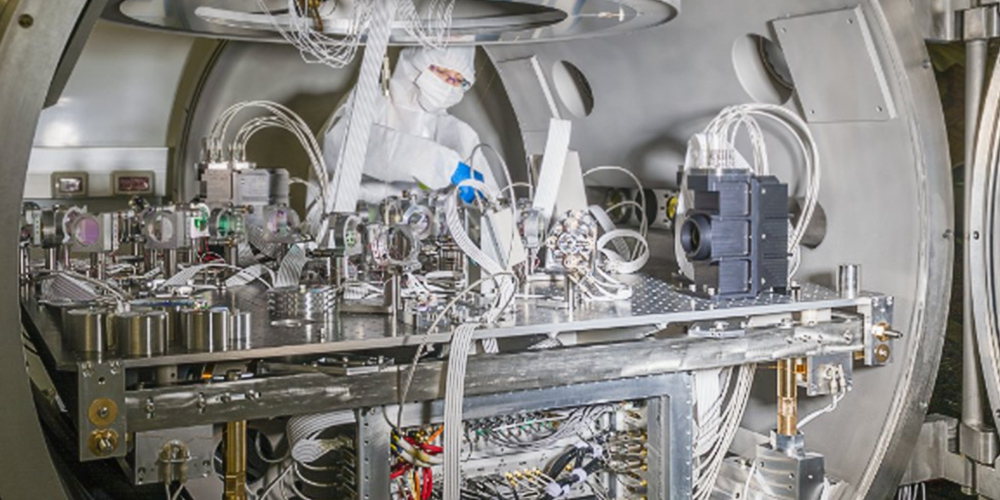
Nikhef is a partnership between NWO-I (part of NWO, the Netherlands Organisation for Scientific Research) and six universities: Groningen University, Maastricht University, Radboud University Nijmegen, University of Amsterdam, Utrecht University and VU University Amsterdam.
The research at Nikhef relies on the development of innovative technologies. The knowledge and technology transfer to third parties, i.e., industry, civil society and general public, is an integral part of Nikhef mission.
The Nikhef collaboration consists of:
- about 210 physicists (70 tenured staff, 40 postdocs, 100 PhD students)
- 75 technical and engineering staff
- 25 support staff
The Nikhef collaboration d has at present eight experimental research lines (ATLAS, ALICE, LHCb, Gravitational Waves, Dark Matter, Neutrino Telescopes, Cosmic Rays and electron Electric Dipole Moment), and in addition research lines on Theoretical Physics, Detector R&D and Physics Data Processing, supporting the experimental effort. The NWO-institute Nikhef is located in the Amsterdam Science Park. Nikhef’s datacenter hosts an LHC Tier-1 facility and is a colocation for various Internet Exchanges (amongst which AMS-IX), housing about 170 different customers.
Maastricht University
The Department of Gravitational Wave Research and Fundamental Physics (GWFP) is a new research center recently established at the University of Maastricht.
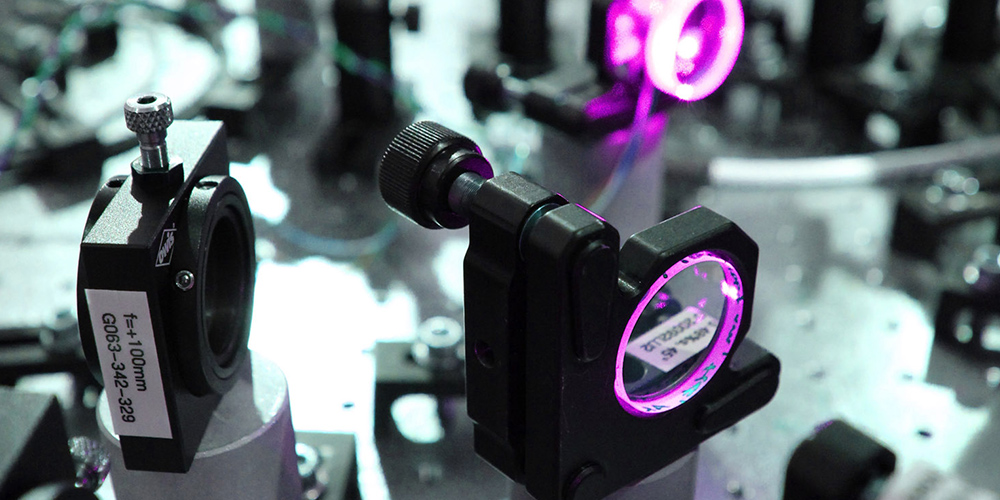
The center has 6 tenured professors (S.Hild, J.Steinlechner, S.Steinlechner, S.Danilishin, G.Koekoek, J.v.d.Brand) working on gravitational wave research, with a particular focus and expertise on instrumentation, including laser-interferometry; low noise materials for mirrors and coatings; silicon as mirror material; squeezed light and laser sources; sensing and control techniques; advanced quantum noise reduction techniques.
The Maastricht group is a member of both the LSC and the Virgo collaboration and an active contributor to the Einstein Telescope efforts. Members of the Maastricht group chair or co-chair 3 out of 6 working groups dealing with instrumentation within the LIGO Scientific collaboration (LSC).
The current spokespersons of the Virgo collaboration is a member of the Maastricht group. In the Dutch national context Maastricht is one of the 6 members of Nikhef, the Dutch national institute for subatomic particles, a powerhouse with a long and successful track record in particle and astroparticle physics.
University of Antwerp
The UAntwerpen Particle Physics group studies the most fundamental building blocks of the universe and their interactions. We do this by performing:
- experimental research at the highest-energy particle colliders
- exploiting other experimental opportunities, such as the search for sterile neutrino’s produced in nuclear reactors
- theoretical and phenomenological research in particle physics
- experimental research in gravitational wave physics
Our group consists of about 20 members (postdocs, PhD students, and technical staff) and is led by 2 full-time professors: prof. Pierre Van Mechelen and prof. Nick van Remortel.
Our research is of highly fundamental nature and relies for its instrumentation on access to top-level international scientific infrastructures and collaborations, providing unique experiences and career opportunities to students and researches.
Ghent University
The research group Experimental Particle Physics is part of the Department of Physics and Astronomy at the University of Gent.
The group is lead by 2 tenured professors (D.Ryckbosch and D.Dobur), with activities at the LHC accelerator at CERN (Geneva), in astroparticle physics with the IceCube neutrino telescope at the South Pole, and in neutrino physics with the short baseline oscillation experiment SoLid. The group has extensive experience in detector R&D in large international collaborations.
Vrije Universiteit Brussel (VUB)
The Vrije Universiteit Brussel recently entered the field of gravitational wave physics. Two groups are closely involved.
In the Department of Physics there is the Center of Excellence “HEP@VUB”, which unifies research in High Energy Physics ranging from theory, over phenomenology to experiment (CMS, IceCube, LOFAR, Auger and SoLiD). In the Faculty of Engineering there is the Brussels Photonics Team, B-PHOT, expert in design, manufacturing and metrology of complex optical components and systems including research on direct-design methods for freeform optics to advanced processes and technologies for pilot-line fabrication.
University of Liège
Together with other Belgian universities, the University of Liège has recently joined the Virgo consortium, with the aim of actively contributing to the development and exploitation of existing and future gravitational wave detectors.
At ULiege, two groups are involved in ETPathinder, namely the Precision Mechatronics Laboratory (PML) and the Liege Space Center (CSL).
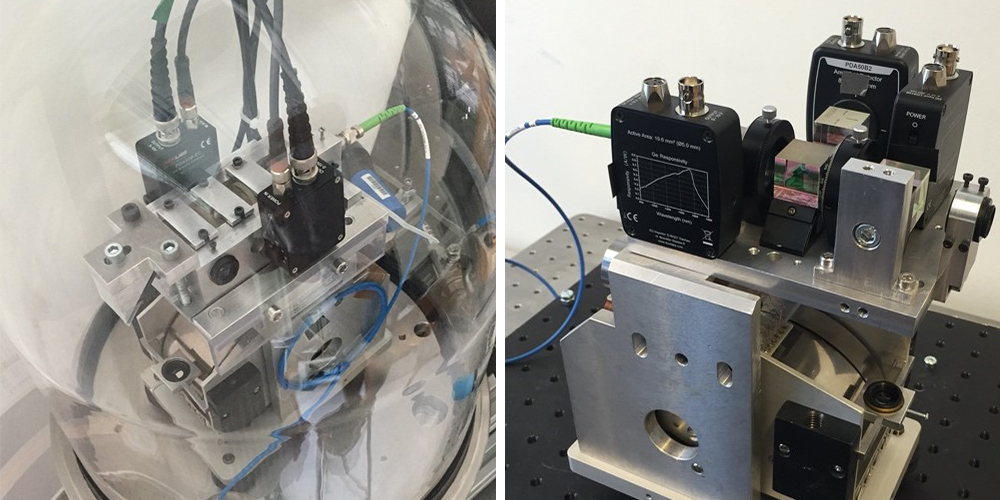
PML is developing instrumentation and strategies for actively measuring and controlling the vibrations of structures. Over the years, it specialized in high precision control of large instruments dedicated to experimental physics, including gravitational wave detectors, particle colliders, segmented ground and space telescopes, satellites and light sources. In ETPathfinder, PML will bring its expertise for developing innovative active seismic isolation system and inertial sensors.
CSL is recognized as a center of excellence in optics, mainly dedicated to the development of space instruments and their calibration for more than 50 years. Especially, opto-thermo-mechanical behaviors under vacuum and cryogenic conditions are regularly performed. CSL has participated to a large number of missions of the ESA, NASA, or CNES.
UC Louvain
The Université catholique de Louvain (UCLouvain) builds on almost 600 years’ experience and is today a multi-site university in Belgium at the forefront of innovation and excellence in education and research.
UCLouvain physics research is carried out at the Research Institute in Mathematics and Physics and more particularly at the Cosmology, Particle Physics and Phenomenology (CP3) center, where theoretical and experimental research on fundamental interactions and cosmology, as well as research and development on associated instrumentation are conducted.
Besides being involved in particle physics experiments, notably the CMS and NA62 experiments at CERN, the CP3 center is active in gravitational wave physics and is involved in the VIRGO experiment at the European Gravitational Observatory EGO.
Presently the center counts 10 academic staff members, 7 research scientists and about 50 postdoctoral researchers and PhD students.
Within ET Pathfinder, the group will contribute to seismic isolation and inertial sensing as well as general design decisions.
VITO
VITO is a leading international research and service centre. It provides knowledge and technological innovations that facilitate the transition to a more sustainable society.
We do this in the field of energy, chemistry, materials, health technology and land use. We unite different parties in a sustainable value chain. By cooperation, expansion and development of expertise we can make smarter use of existing sustainable solutions and develop new technologies.
Technology should be feasible and cost-effective. This calls for partnerships between research centres, commercial parties and the authorities, who together create impact in the sustainability transition. VITO is the driving force by providing practical knowledge, innovative processes and business models.
VITO makes this connection between research, government and market, between knowledge, policy and business in order to create impactful changes.
VITO. Vision on Technology for a Better World. Sustainable. Entrepreneurial. Inspiring. Creative.
RWTH
The RWTH Aachen University is one of Germany’s Universities of Excellence. It is a technical university with a focus on engineering and natural sciences.
The physics department at the RWTH Aachen University has a long tradition in large scale experiments in particle and astroparticle physics. With their technical expertise the institutes made major contributions to the development and construction of experiments at the European Center of Particle Physics CERN and other projects worldwide. Here the institutes 3A and 3B will participate. They have large workshops on mechanics and electronics with experience in the development of all kinds of detectors, sensors, monitoring, etc.
In the past 10 years the two institutes contributed to AUGER, CMS, DoubleChooz, IceCube, JUNO, T2K and to spin-offs into medical physics and other areas. This technical expertise is the basis for our participation in the project. The RWTH Aachen University educates more than 45.000 students including more than 10.000 students with an international background.
Fraunhofer Institute for Laser Technology
With more than 540 employees and more than 19,500 m² net floor space the Fraunhofer Institute for Laser Technology ILT is worldwide one of the most important development and contract research institutes of its specific field.
The activities cover a wide range of areas such as the development of new laser beam sources and components, precise laser based metrology, testing technology and industrial laser processes. This includes laser cutting, caving, drilling, welding and soldering as well as surface treatment, micro processing and additive manufacturing. Fraunhofer ILT has been developing high stability laser sources based on fiber, rod and Innoslab concepts for more than 10 years. These systems are designed for operation in harsh environment like Helicopters, Jets and on Satellites.
The University of Twente (UT)
The University of Twente (UT) is a relatively young, entrepreneurial university located in the city of Enschede NL. Some 3,300 staff carries out ground-breaking research, brings about socially relevant innovation and provides inspiring teaching for more than 11,000 students.
UT generated more than 1000 spin-off companies. The research cluster Energy, Materials and Systems (EMS) is part of the Faculty of Science and Technology (TNW).
The research of EMS is application oriented and greatly benefits from its internationally recognized expertise and unique infrastructure on applied superconductivity and cryogenics. EMS is one of the very few groups world-wide where both competences, cryogenics and high-current superconductivity, are integrated within a single research unit.
EMS investigates the application of superconductivity in the power grid in which cryogenic cooling is a key enabling technology, as well as in innovative technologies for the separation of waste streams.
Furthermore, new cryogenic technologies are explored in a wide variety of applications, in particular in medical and space technologies, specifically on vibration-free sorption-based coolers and on microcooling. In terms of permanent staff, EMS consists of 7 senior scientists and 6 technical and administrative staff. The number of students is typically about 25 of which around 20 are PhD students.
More partners
- Eindhoven University of Technology
- KU Leuven
- UHasselt
- TNO
The founding partners welcome additional collaborators. Contact us for more information
